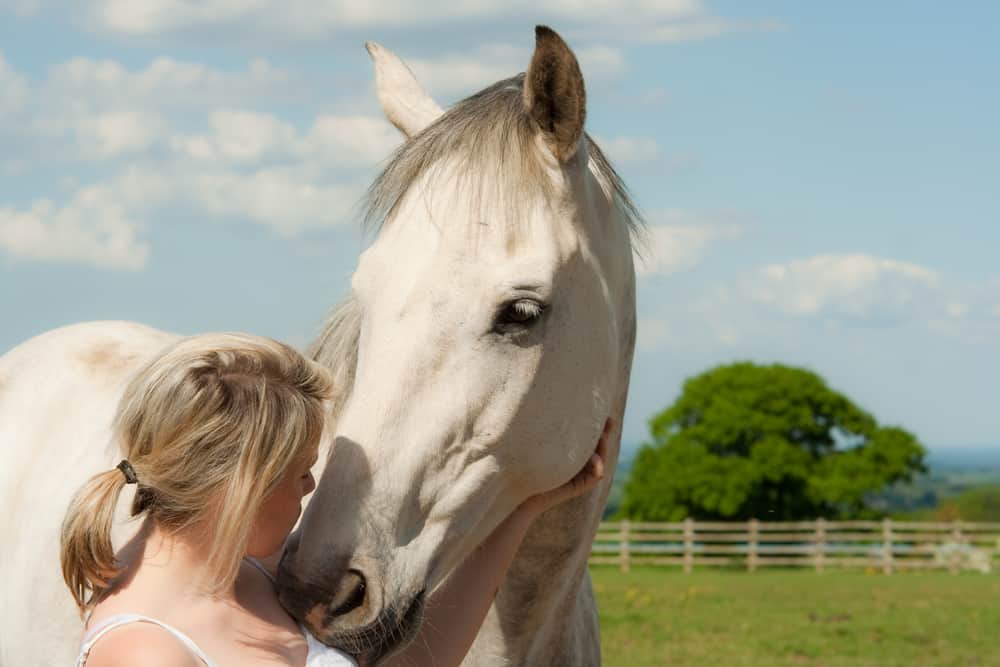
by Amy Nistor | Jan 9, 2018 | Testimonials & Reflections
…A Personal Experience with Natural Lifemanship
As I entered the 2017 Natural Lifemanship Conference I felt very small, and insignificant compared to others there. I felt the need to make myself humble, kind and help out to be seen by others. This was the agenda of my 4yo little girl self that insisted that she must sacrifice her own needs, thoughts and ideas and voice to meet these things in others in order to get attention. She believed the only way to get attention and love is by catering to others and sacrificing yourself.
During the conference, I was fighting to be true and authentic and not fall into this agenda to get attention through submission. As I did so, the tension in my shoulders increased throughout the day. A self-regulation exercise at the conference revealed the tension in my shoulders was connected to the 4-year old self. She was pressing hard onto the upper portion of my right shoulder to cause me to submit, cower down and be passive to others at the conference and I was trying to resist her insistence. She wanted me to accept her way to protect me from getting hurt and trying to connect in the only way she knows how through submission. At that moment, I just assured her that I love her, I see her. I explained inwardly it’s safe to explore a new way, but the sharp pain of pressure in my shoulder remained.
Later that evening after the day was done I found a quiet spot to put on my bilateral nature sounds and focus in on my little girl and that pressure in my shoulder. Quietly and with love I entered into how scared and terrified she was. How she was trying to protect me and help me get attention in the only way she knew how and I was resisting her. I just sat in the rocking chair and loved her, held her, rocked her in that terrified-place she was living. I explained to her this new community of connection the NL community offered is pure and allows her
to be completely herself and that she doesn’t need her old ways of cowering. At this exchange, a deep rumbling of weeping arose within my chest. It rose and fell like waves rising and crashing at a deep place within my core. At the same moment, a great sense of gratitude fell over me. I was grateful with all my being to be now offered the love I always deeply desired.
Though my heart desperately had looked for love all these years, I came to rest on the truth that what I was truly seeking was true, pure, connection that sought good for both in the relationship.
That night at the NL conference demonstration, Tim showed with the horse, Jack, how he gently invited the horse to a pure, true connection that offered good for both in the relationship. It was clear from watching how safe and secure that invitation was. I realized that was what Tim offered me that day in February 2017 at the NL Fundamentals Training during the Rhythmic Riding demonstration. Tim offered me a true, pure connection that didn’t take from me, nor demand any part of me that met his needs. He offered me a
connection that had my back, that held me as the horse did and if I couldn’t connect with the horse, it was ok, he would connect and hold the horse. I only had to connect to me and my deep grief. The grief of having no support for so long and the deep desire to be seen and connected. It was there in that moment with a gentle hand on my leg his touch said, “I see you, I’ve got you, it’s ok, just let go and be held.” When I connected to myself and what I was feeling, it was then that the horse met me there with connection and held me from
beneath. I was not alone. I was held by this beautiful horse that carried me on his back and a man that didn’t take from me but offered to be my strength and stability while I fell apart.
That experience was so terrifying, but so deeply satisfying at the same time. I wanted to run from the eyes and attention of everyone that was holding me at that moment. I was so fearful it would turn against me, but it DID NOT, the care and connection were true and secure. That secure holding experience just made me cry deeper in grief of not having it for so long. Now at 40 years of age, I was being offered it freely by a tender, strong and loving cowboy, a beautiful horse, and a crowd of strangers that desired the same kind of connection.
After the NL demonstration at the Natural Lifemanship conference that night, I rocked that scared 4yo inside of my heart. I cried and cried with the grief of so much time gone by without a secure connection and yet I was overflowing with gratitude my body felt it could not contain. With bilateral nature sounds in my ears, chest heaving, tears falling and body rocking, Texas raindrops began to fall on me. I felt as if a deep cleansing and filling was happening as I received the pure connection this community offered and all of me moaned and cried with gratitude. I sat in that place for a long time. Suddenly out of nowhere, I felt a pop in my shoulder and the pressure that 4yo girl held on me was released. With clothes damp and rain diminishing the thunderous shaking within me softened and became like a soothing lullaby. My eyes closed and a soft sadness fell from that little girl inside. She realized her attempt to protect me had hurt me and kept me from connecting truly with others. With soft whispers and loving kindness, forgiveness and grace was exchanged. Peace within us was found and connection deepened to a quiet place.
As I looked out into the darkness of that cool Texas night I felt a nearby presence that approached more as I moved through this inner exchange. In this quiet place, I realized it was the paint horse I met in the pasture the day before. He was the lowest in the herd and approached them with a fearful submissive stance. I noticed his position then and my 4yo little girl could relate with his position and loved him for it.
That night as inner peace was found, this paint horse stood nearby in the pasture, almost there to acknowledge and honor the little girl he met the day before. I was drawn to get up and go near the fence and show my gratitude for his appearing. As I walked in the darkness in his direction I could feel my attention on him made him uneasy. In honor of his concern, I turned my body parallel to him and looked away, yet stayed connected to him in my heart. I knelt toward the grass to make myself even less threatening and listened as He grazed even closer to me. My little girl self so wanted to have a physical contact with him, but inwardly extended honor and gratitude for him seeing her and honoring her at her most vulnerable.
In desperate waiting for more closeness, out of the darkness the black lead mare ran between us and moved the paint horse far away from me. At that moment, my little girl fell away and my adult self stood up and appeared along the fence. I was shocked and saddened, but also realizing that black lead mare just gave me a precious gift. She reminded me I am no longer a scared submissive little girl, I am a confident and beautiful woman that doesn’t need sympathy but encouragement to move forward, walk boldly and be me. As I made my way to the bunkhouse and prepared for bed that night, I heard a whinny out in the pasture. I felt called to meet it. When I arrived at the fence the black lead horse stood close to the fence and grazed while I stood beside her. Her presence assured me, all was ok and I did not need reassurance from anyone that my experience and my healing release needed validation. All was good in the pasture and she was calling me to graze on and just confidently be me.
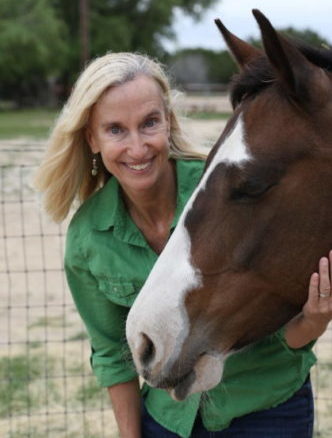
by Kathleen Choe | Nov 18, 2016 | Basics of Natural Lifemanship, Case Studies, Testimonials & Reflections
. . . Does Connection Really Matter?
Frieda kicked out, ears back, black and white tail lifted high. She was clearly not happy about the pressure that Natural Lifemanship founder and Equine Professional Tim Jobe was putting on her to ask for connection. Tim explained that Frieda had spent the whole 12 years of her life occupying a pasture near a mobile home park, where the residents and their children petted her and gave her apples. No one had ever asked her for anything in return, until now. Frieda started out by pointedly ignoring Tim when he began asking for attachment. When he brought his body energy up a bit and made a smooching sound with his lips, she promptly burst into a frenzy of bucking and kicking as if in disbelief that he would continue to make this (in her mind) ridiculous request. I watched Frieda’s spirited display of resistance, which reminded me of a child’s tantrum, while Tim continued to keep the pressure the same by maintaining his proximity to Frieda no matter where she went in the round pen and directing the same amount of body energy from his core, directed now towards her side, in a request for detachment (connection with some space, or a boundary).
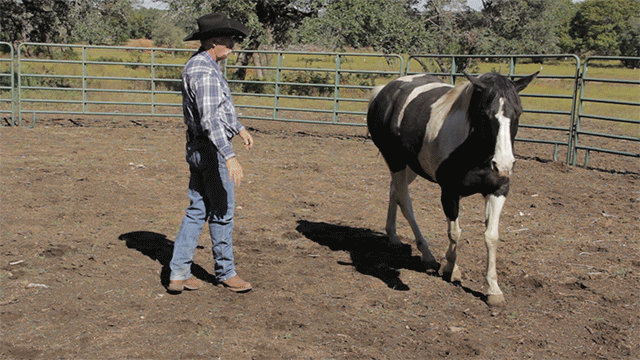
One of the training participants asked if it wouldn’t be better for Frieda to be allowed to just continue enjoying her peaceful life of being petted and given treats. Why should we upset her by requesting something clearly only we humans wanted, and she did not seem to value at all? I thought about this question. I generally avoid conflict, and it can be difficult for me to ask for things in a relationship that I know might be considered inconvenient or difficult for the other person to give. I sometimes settle for less than I should in a situation simply because asking for what I need feels “too hard.” I felt a bit sorry for Frieda too, actually. In the weeks that followed, I did a great deal of soul searching about this principle of the Natural Lifemanship model: If it is not good for both parties in the relationship, it is not good for the relationship itself. How was asking for a connection from a human or horse who seemed unwilling and unhappy about giving it still good for the relationship? I came up with the following reasons:
1. Experiencing a healthy connection enhances the quality of life
Both humans and horses experience better physical, emotional, and mental health when they know how to have a positive connection with others. Connection builds cross brain connections which allow for responding (making choices from the neocortex informed by the limbic system) instead of reacting (from the brainstem where the only options are fight, flight, or freeze). Horses who are able to access the thinking part of their brain engage in fewer skirmishes in the herd, resulting in a decreased risk of injury from being kicked or bitten. The experience of connection in a relational context releases dopamine in the brain, which creates a feeling of well being. Humans also benefit from healthy connection: research shows that people with a strong social support network live longer with fewer health problems than those who are more isolated.
http://www.health.harvard.edu/newsletter_article/the-health-benefits-of-strong-relationships
2. Healthy connection creates positive interactions
Domestic horses depend on humans for food, shelter, and care. The more they can access their neocortex in cooperating with their human caregivers, the better their experiences with humans is likely to be. People respond more positively to friendly horses, keep them longer, and are able to give them the medical care they require if they are allowed to touch their ears, hooves, and other parts of the body to give medicine, as well as perform massage or other therapeutic touches. Horses who have not been helped to be comfortable with being touched all over their bodies may not receive the care they need when sick or injured. Reactive horses tend to have multiple owners and often end up in bad situations as people give up on trying to manage their behaviors. Connections between horses in the herd also change. Joey, a wild mustang at Spirit Reins, was not a part of the herd until clients began choosing him as their relationship horse. Now, Joey allows and engages in mutual grooming behaviors with some herd members. This has increased Joey’s safety and sense of well being as he becomes part of the herd.
3. Healthy connection heals trauma
Both humans and horses may avoid intimacy because they have learned that relationships are a source of pain rather than comfort. At some point, they may have decided that requests for connection will only lead to harmful interactions, and find ways to avoid intimacy as a form of self-protection. Healing this broken pathway through patient, persistent work on attachment and detachment results in restoring trust in relationships as a safe place to be both seen and known. Our deepest desire as humans is to be fully known and fully accepted. Trauma destroys any hope that this is possible. Inviting connection using the principles of pressure rewires the brain to have a different response, unfreezing the trauma and allowing it to process through for both horses and humans.
https://childtrauma.org/wp-content/uploads/2014/12/The_Role_of_Healthy_Relational_Interactions_Perry.pdf
https://www.brainpickings.org/2016/06/20/the-body-keeps-the-score-van-der-kolk/
4. Healthy connection helps with self-regulation
We can co-regulate with those whom we have positive, trusting relationships. Attunement in relationships allows us to give and receive comfort to each other. Any stressful situation immediately feels less overwhelming if we don’t feel so alone in it. Connection helps calm and soothe us when we are distressed.
http://www.cde.ca.gov/sp/cd/re/itf09socemodev.asp#emoreg
http://austinpublishinggroup.com/psychiatry-behavioral-sciences/fulltext/ajpbs-v1-id1021.php
5. Connection increases our capacity for joy
Biologically we are driven towards connection. Both human infants and foals depend upon their mothers or early caregivers for survival and learn how to get their needs met either in positive or negative ways depending upon the environment they are born into. Even those who struggle with intimacy due to abuse or neglect experience a consistent conflict around the internal drive to seek connection while simultaneously fearing the result of doing so. On a primal level we know we need relationships to survive, so we set about creating the only kinds of relationships we know how to have which often results in a serial pattern of maltreatment and heartbreak. As we rewire the brain through a healthy connection we increase our capacity to experience positive emotions which results in a positive synergy: positive connection building more cross brain connections which build more opportunity for positive connection. Symptoms of anxiety and depression diminish as deeper and more satisfying connections are achieved.
http://nautil.us/issue/28/2050/what-technology-cant-change-about-happiness
While it can seem more benevolent not to initiate or persist in asking for connection with a being who appears disinterested or resistant, I realized that avoiding the work of connection indicates a devaluing of self, the other, and the relationship. I am not seeing that I have enough inherent value to make the request, or that the horse/human has enough value for me to pursue them. In other words, if I am more interested in self-protection than pursuing the relationship I am choosing the relative comfort of isolation over the deeper comfort of intimacy. I am essentially demonstrating that the relationship is not worth investing my time and energy in and that I am not willing to risk initially being ignored and/or rejected as I seek to build the relationship.
When Frieda eventually tired of galloping and bucking around the ring, she slowed down and seemed to consider Tim’s quiet, persistent request for connection. She stopped and swung her beautiful head toward him, wide-eyed and snorting, ears flicking back and forth. Tim immediately stepped back to release the pressure and let Frieda know that her choice was good for the relationship. Frieda considered for a few moments longer, then took that long-awaited step towards Tim. He stepped back a bit more. Frieda changed her mind a few more times along the way, going back to ignoring and resisting, before realizing that maybe attachment felt better than running away. By the end of the session, Frieda was walking comfortably alongside Tim, resting her head on his arm occasionally, and turning her big brown eyes to him as if to say that this was her idea all along. Frieda finally realized that a healthy connection can feel safe and enjoyable.
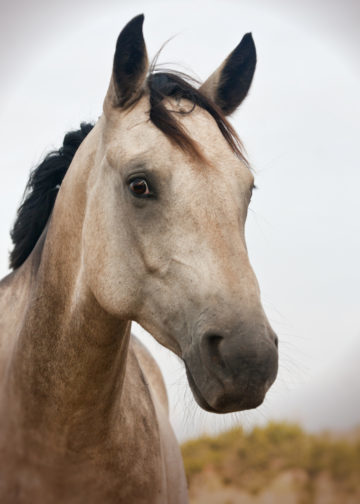
by Kathleen Choe | Jul 15, 2016 | Testimonials & Reflections
Understanding Attachment
I didn’t have a name for it until I took an Abnormal Psychology class in graduate school: Post Traumatic Stress Disorder. Suddenly all the fear and anxiety that permeated my childhood home made sense in a way it never had before. My parents were both in concentration camps as adolescents during World War II: my father, who was born and raised in the Netherlands, was sent to a German labor camp in Austria, and my mother, who was born and raised in Indonesia, (a Dutch colony at that time in history) was imprisoned in a Japanese camp when Japan invaded her country. I learned that I had developed an insecure attachment to my traumatized parents, whose coping skills were further challenged when they emigrated to the United States after my sister and I were born.
I became determined to understand how to heal my style of relating to people, to develop what attachment theorists call an “earned secure attachment.” Although I made friends easily, I struggled to maintain long-term relationships. When conflicts arose, I tended to withdraw or even terminate the relationship rather than try to work through the issues. I had no conflict resolution skills, nor was I especially attached to any particular friend. Leaving was easier. I didn’t miss people when they moved away. Once I confessed to my therapist that I was afraid I would not have a normal grief response when my aging father passed away. “You can’t miss someone you are not attached to,” he pointed out. I read every book and attended every conference I could find on healing attachment wounds but continued to struggle with creating an internalized sense of connection to people when they were not in my presence.
At my first Natural LIfemanship Fundamentals Training, I watched the demonstration of connection with the horse through attachment. I strove to learn the tasks involved in asking for connection: looking at the horse’s rear to give him a choice, increasing the pressure by raising my body energy, releasing the pressure by stepping back if the horse turned to look at me or better yet, stepped towards me and began to follow. I had no idea what calm body energy was. The only time I was aware of my body energy was when I was angry or anxious. I did become anxious when the horse continued to ignore me throughout the training weekend. I clapped, clucked, waved my arms, swung a halter rope and even did jumping jacks while my horse resolutely stared away through the rungs of the round pen at the pasture beyond. I felt dismissed, invisible and rejected.
After the training, I began working with a relatively untrained horse named Nevada in the round pen whenever I had a chance. I stood in the round pen with her, taking deep breaths, trying to empty my mind of distracting thoughts and identifying and releasing any emotions that might interfere with making a calm, confident request for her to connect with me. At first, Nevada twitching her ear in my direction felt like a victory. As I learned to attune to the ways she was communicating with me: the position of her head, whether her posture was tense or relaxed, whether she ignored or resisted my requests; I noticed that her interest in engagement seemed to correspond to the mood and energy I was bringing into the round pen. When I was relaxed and calm, connection was much easier than when I arrived with stress or worries from the day. Still, even when Nevada began to attach quickly and predictably on my first request, while I enjoyed the experience of walking together, and the way she would rest her head in the small of my back, blowing her warm breath on my neck, I didn’t actually “feel” something change in my body the way other people described when they were connected with their horse. I wondered if my attachment wounds were too deeply etched to ever completely heal. I wondered if having mastered “how” to achieve attachment with my horse was as good as it was going to get for me.
Then one day I was out in the pasture catching horses to bring to the round pens for another training. I was buckling the halter on one of the mares when I sensed a presence behind me and felt a warmth permeate through my body. I stood still, marveling at the experience of a peaceful calm radiating from my heart. I knew without turning around who was waiting behind me: Nevada. I truly felt the connection with her for the first time. I hadn’t even asked her for it. It was her gift to me. I realized that I had become so focused on the “task” of building connection, so concerned with getting the steps right in order to achieve the “right result,” that I had completely missed the relational component of connection with Nevada. When I wasn’t trying so hard to do it right, with all the performance pressure that entails, I was able to experience an attachment connection to my four-legged friend by simply being present in the moment, open to her offer of friendship.
Looking back, I realize how I let my fear of being too damaged, and my fear of failing at being able to create attachment with my horse interfere with just letting the process flow from my inner core, where my desire for relationship and a recognition that I was worthy and valuable enough to ask for connection could come from my heart, instead of a compartmentalized set of rules and tasks in the neocortex of my brain, completely separate from those helpful cross brain connections between the brain stem, diencephalon, and limbic system. Only when I was connected to myself could I truly connect to Nevada.
Photo of Nevada courtesy of Spirit Reins.
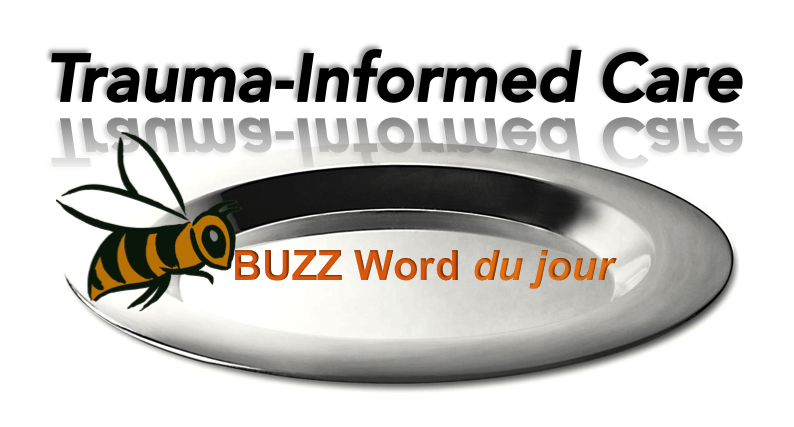
by Alex Hamilton | Jun 22, 2016 | Testimonials & Reflections
Reflections on Natural Lifemanship Fundamentals
Buzzwords, jargon, flavor of the day – they are all ways that we describe a common phenomenon in our society, image over substance. Why do we use them?
Usually, these terms begin as an attempt to create a common vocabulary, but as the concepts catch on we often short cut the hard work of understanding for the quick fix terms. In the world of trauma recovery and human relationships, we often drift to such terms without really understanding what they mean. One of the current buzzwords in this work is Trauma-Informed Care (TIC). The term began as a way of helping professionals and caregivers understand that trauma impacts the way children develop. Over the past 20 years, I have watched the term devolve into a convenient quick way to say ‘my program is relevant’ without having any substance to back it up.
In its purest sense, TIC is about a shift into understanding how the brain responds to life-threatening situations, how those shifts impact our development across the life cycle and how our hardwiring for relationship and rhythm provides a pathway to restructure those responses. It is a shift from behavior modification approaches that revolve around consequences and rewards, to approaches that focus on building healthy relationships. I have attended more training, read more articles and watched more videos about TIC than I care to remember. More often than not these approaches are just recycled behavior modification with a kinder tone and a bit of brain research to make them look scientific. Rarely do you see something new outside of the great minds of Dr. Dan Siegel, Dr. Bruce Perry, and Dr. Karyn Purvis.
I have spent the past 20 years working with children, adolescents, and families who have experienced trauma and are struggling to develop authentic relationships. I have studied the works of these great minds while questioning why some individuals seem to be able to apply these techniques effectively and others do not. I keep searching for an answer, the right technique, or the right words that provide healing. It is not that I do not want to help my clients, it is simply that I struggle with how to teach clinicians to develop genuine relationships while maintaining appropriate therapeutic boundaries.
This past weekend I had the opportunity to attend a 3-day training that I desperately wanted to be something different, but fully expected would be the same recycled material layered on the love of a particular activity – in this case, horsemanship. I have studied Equine Assisted Psychotherapy (EAP) models for a couple of years now and tend to see one of two things: either practitioners who really just want to ride horses and use EAP as an excuse to do so or play therapists who like working in an extra-large sandbox. I expected this training to be the former.
It was with this mindset I drove onto the tranquil campus of Spirit Reins to attend Natural Lifemanship’s Fundamentals of Trauma-Focused Equine Assisted Psychotherapy. I sat through the first 4 hours as they introduced the model with my curiosity piqued. The trainers seemed to deeply understand the human need for relationship and the way a horse responds to a social connection in similar ways. Authenticity is a rare thing in our world and even rarer in our profession. Many therapists I know, mask an enormous layer of insecurity behind a façade of clinical jargon. We do not do authentic. Our training programs teach us to appear connected while maintaining ‘professional boundaries.’ We get warned about the dangers of burnout, dual relationships, and counter-transference.
For the practitioners of Natural Lifemanship, relationship is not a buzz word, it is a way of life. Humans are easily fooled. We value thinking over feeling and logic over intuition. Horses trust their gut. They have to for survival, and as such provide an incredible classroom to learn about authentic relationships.
This reality came home to me on the afternoon of the first day. I have more horse experience than the average person, but I am still mostly a novice. I do however know how to catch, halter and lead a horse with decent confidence. Our first objective was to attempt to connect with a horse through mutual agreement. The task was simple. Use your body energy to ask for connection and then spend time in connection. My initial thought was, ok whatever, I can get this horse to follow me, but ‘connection’ that’s simply a personification of the submissive behavior of the animal.
As I attempted to get Beau to connect, he simply ignored me. I raised my external body energy, yelling, flapping my arms, clapping etc… to no avail. As hard as I tried, I simply could not raise my internal body energy. Bettina, our trainer, then made a comment that brought 20 years of frustration in the field into clear focus. She explained how for mental health clinicians this is often a difficult task because we are trained to remain calm. After all, you can’t panic when a client shares their story of being sexually assaulted. So we master the art of keeping our body in a low energy state.
As I reflected on this more throughout the weekend I realized that authentic relationship must occur in the entire brain (Lower, middle and upper). One of the basic brain fundamentals taught in every TIC training is that when we are highly aroused we cannot effectively activate the thinking part of our brain. The easiest way to bring arousal down is to limit the limbic system because our emotions easily drive our arousal state. The result is that as therapists we learn to remain calm and in our neocortex during sessions by disconnecting from our limbic system. We then rely on techniques such as mirroring and reflective listening to imitate genuine relationship. These techniques do not work on horses. Horses only respond to genuine relationships and as such provide a training ground for building authentic connections.
Regulating our arousal while remaining mentally focused and emotionally connected is a difficult skill but at the heart of an authentic relationship. No wonder we have such a high rate of depression, divorce, and burnout amongst mental health professionals in this country. We have trained an army of people to be disconnected.
One of the principals of Natural Lifemanship is that if it is not good for both it is eventually not good for either. Effective therapy requires the therapist and client to connect in a genuine and healthy way. These principals use horses to allow clinicians and clients to practice and master the skills of authentic connection. Natural Lifemanship is as much about training the practitioners how to engage in an authentic relationship, as it is about rewiring the client’s brain.
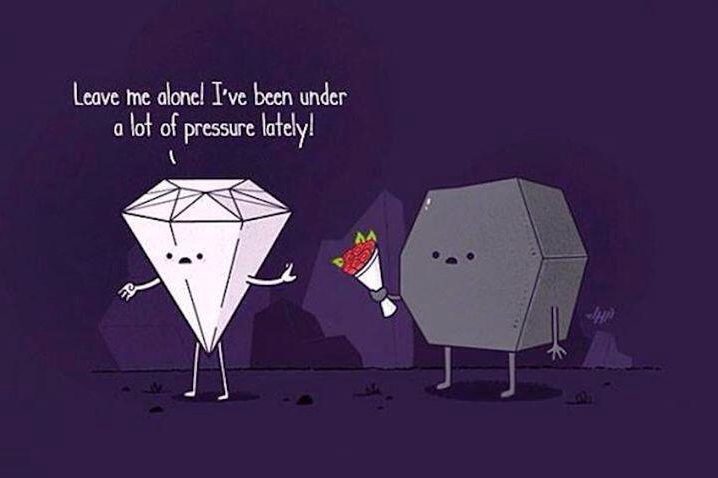
by Kate Naylor | Jun 14, 2016 | Testimonials & Reflections
Is It Always a Bad Thing?
In Natural Lifemanship, we use the word ‘pressure’ a lot. It’s been very carefully chosen, actually, because of its usability in all circumstances. We use it when we talk about horses, families, therapy, work, and everything else. But for many, the idea of pressure connotes something negative – pressure is force, pressure is stress. The dictionary describes it this way. And if you have any experience with typical horse training, you would be right. Typically, horses are forced or stressed into making the choice that humans want. So much pressure is exerted that the horse will do anything for a release. These methods of force have no place in therapy, so it is important for us to really examine the idea of pressure, and whether or not it truly is a negative thing all of the time.
I have heard many times that pressure is an unkind, unhealthy thing that we should never exert on children, animals, our partners – but I believe when people say that what they mean is inappropriate pressure. And to that I emphatically agree – YES! Inappropriate pressure is unkind, unhealthy, and not good for relationships.
But just plain old pressure? That’s simply a fact of life, and of relating.
Let’s look at some examples. When your toddler walks up to you, arms outstretched, is that not pressure? Your toddler is making a request using a small amount of pressure…energy…force. And is that a bad thing? Or is your toddler simply trying to connect? What about when your horses stand at their gate watching for you at breakfast time? Your calendar has a big red circle on Friday because your project is due? Or your dog sits by the back door, waiting patiently to be let out? All of these behaviors exert a very small amount of pressure on us – it is simply communication. When we think about it in terms of our own personal development, we call it eustress. A small amount of tolerable stress that helps us grow. Pressure can be the same, when it is used appropriately.
Now, if completely unwarranted, your toddler screamed and yelled and threw himself on the floor about being picked up; or your horses tore down their gate and galloped into the feed room…now that is some serious pressure, that is inappropriate pressure.
In a perfect world, we wouldn’t have to exert pressure on each other, right? Some folks seem to think so. But, can you have a relationship without pressure? Can you grow without pressure? Physically speaking, no, we can’t. Consider an astronaut – without gravity constantly exerting pressure, brains and bodies atrophy. And emotionally speaking, no, we can’t either. How far would you have gotten in academics had you not felt some pressure from yourself and those who loved you (pressure as expectation)? Would you and your partner ever have met if someone didn’t work up the courage to speak to the other one (pressure of requesting engagement)? Would you and your pet have much of a relationship if you both just went your own way and took care of yourselves all the time – never exerting any requests or offering any engagement? Likely not. We would physically deteriorate, and be relationally alone, without pressure.
Relationships require give and take – giving of time, of attention, of energy while also taking of time, of attention, of energy. We engage in this dance of a relationship through moments of pressure – requests made by one to the other. When it is done appropriately, pressure is not harmful or frightening. It is the stuff healthy growth and relationships are made of.
Kate Naylor is a licensed therapist specializing in TF-EAP in the Austin, Texas area. For more information visit: http://www.Kategosenaylor.com







Recent Comments